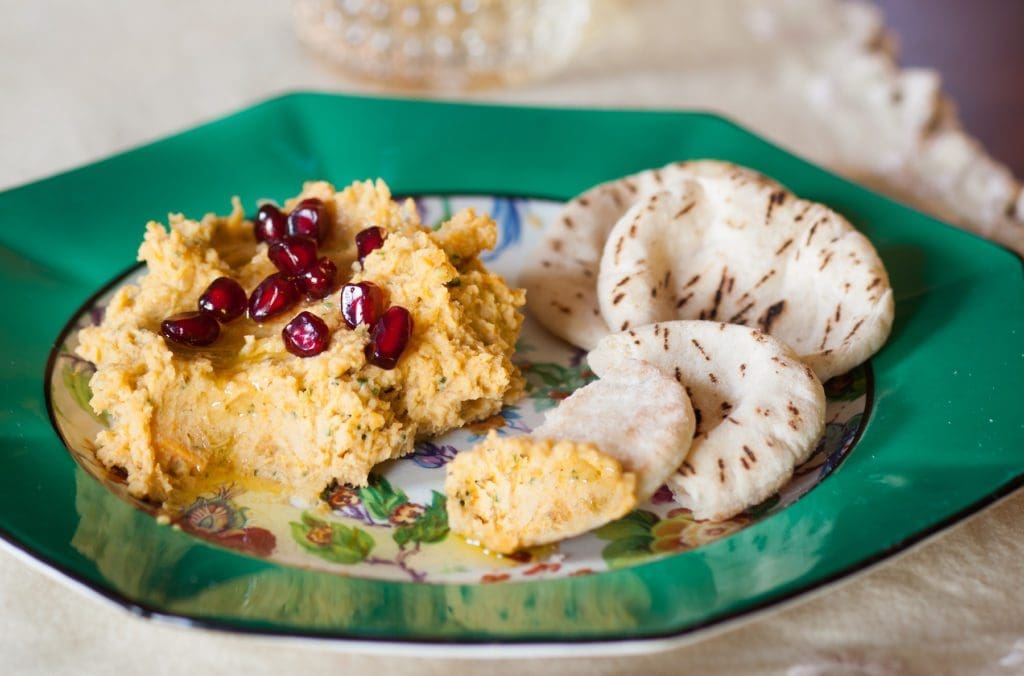
Introduction by Jennifer Williams, Director of Communications at AMDF
My grandmother, who is 94, can still read a menu in a dimly lit restaurant without glasses, while I’m on the verge of buying a portable magnifier to carry with me.
No one could say for certain why my grandmother’s vision is still so sharp, but it is undoubtedly a combination of good genes, and a healthy lifestyle. She never smoked, never drank, has walked every day of her life, and aside from her sweet tooth, has always eaten well (unprocessed foods, with lots of fresh fruits and vegetables).
She also has brown eyes, and a naturally thin frame. These are outward signs of the genetics that likely have contributed to her eye health.
My earliest, and fondest, memories are of my grandmother’s hands, always at work preparing fresh, homemade foods. Blueberries from her backyard, fresh cream from a neighborhood farm, spring water directly from the source, and lots and lots of chicken soup, made from scratch.
Food is a powerful force. It brings us together around tables, it fuels and nourishes us, and it can be also be medicine.
Wherever you are in your journey with macular degeneration, Thanksgiving, and other holidays, present challenges AND opportunities.
If you are newly diagnosed, you may be stressed about what you should and shouldn’t eat. If you are experiencing early stage vision loss, you may be less confident in the kitchen, and wondering how you can contribute. And if you are at more advanced stages of vision loss, not only may you be grieving your loss of independence in the kitchen, but gatherings can take place in unfamiliar environments and it may feel even more disorienting when you can’t recognize faces. Or you may be living in assisted living, away from family.
Thriving with macular degeneration involves allowing the natural grieving process to bring us to a place where we can accept the reality of our losses and the changes we have to make, and then find new ways to do things to derive meaning out of daily life.

In Time to Grieve, Time to Thrive, Dr. Ann Wagner dives into the topic of vision loss grief. This article will appear in our upcoming winter issue of, In the Spotlight, AMDF’s print newsletter. Not a subscriber? Click here to learn how to subscribe to In the Spotlight.
From this perspective, Thanksgiving provides a real opportunity to take on the challenges of acceptance and adaptation! There may be some emotional moments, but emotions tell us what’s important to us.
Here are some tools to empower you to have a meaningful, healthy, and safe holiday. Let’s start with recipes.
Thanksgiving Recipes Good for Macular Degeneration
Food, is the “centerpiece” of our gatherings. Whether you’re able to prepare recipes yourself, or with a little help, or you have an opportunity to make suggestions, here are some free resources and recipes that make wonderful AND eye-healthy options.
Let’s start with a brief overview of the nutrition we know to be good for macular degeneration. Nutrition is a complex science, and nothing is definitive, but here are some things that are generally agreed upon.
- Foods high in lutein and zeaxanthin, which protect the macula from damaging light from the sun, are a good foundation for macular health.
- Low glycemic index foods and recipes help reduce the risk for advanced AMD.
- Whole foods are superior to processed foods for general health and eye health.
- Newer research indicates that microbiome health is also important for eye health.
- Foods rich in omega-3 fatty acids are beneficial for macular health, while foods high in omega-6 fatty acids should be limited.
- Vitamin A is essential for maintaining healthy vision, especially in low-light conditions. (Smokers and former smokers should consume with caution.)
- Vitamin E is an antioxidant that helps protect cells in the eyes from damage.
- Zinc is important for the functioning of enzymes in the retina and may help reduce the risk of AMD.
Few recipes will be able to hit every mark, but here are some good seasonal, and festive, side dishes that will not only be a hit for the palate, but will also be a “feast for the eyes”.
Bonus – these recipes offer an opportunity to educate the younger generations on nutrition that can help reduce their risk of developing macular degeneration!
Squash and Cranberry Salad

This beautiful and easy to prepare salad can be made even more macular degeneration friendly by substituting raw spinach for mixed greens, or a 1/2 and 1/2 mix. Raw spinach is one of the highest foods in lutein and zeaxanthin (rivaled only by kale).
Roasted Butternut Squash Hummus

A unique way to serve butternut squash (full of carotenoids and Vitamin A)! Add a little festive cheer by garnishing with pomegranate seeds as shown here.
Ina Garten’s Confetti Corn

Did you know corn is one of the vegetables highest in Zeaxanthin? This colorful dish adds other veggies and herbs to elevate your traditional Thanksgiving corn. And frozen corn can be substituted for fresh, not only when fresh isn’t available, but when low vision can make cutting corn from the cob a safety hazard.
Speaking of kitchen safety…
In the Kitchen with Macular Degeneration
Many with progressive central vision loss can feel frustrated or even unsafe in the kitchen. With the right tools and adaptations, cooking is still quite possible, and can return a sense of independence. Here are some AMDF resources for cooking safely with central vision loss.
This first video is from our Eat Right for Your Sight cooking show. In this episode, Jennifer Trainer Thompson is joined by low vision occupational therapist, Beth Daisy, who demonstrates several tips and tools for cooking with low vision.
For a more in-depth conversation with Beth Daisy…
Struggle with writing or reading a shopping list? This quick video offers tips and tools.
Organize the foods in your pantry for low vision with low and high-tech options.
From our table to yours, wishing you and yours
a happy, healthy, and safe holiday!




